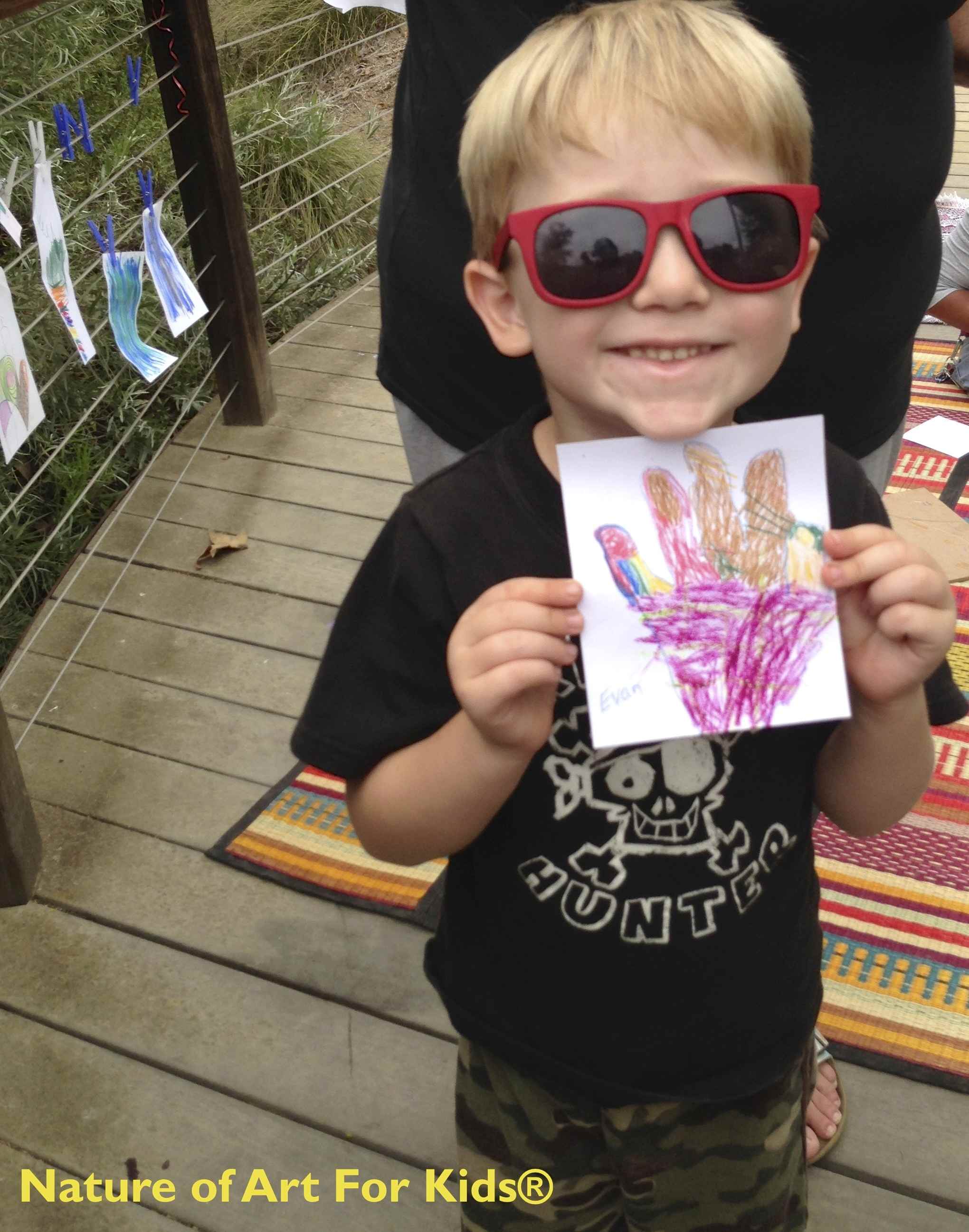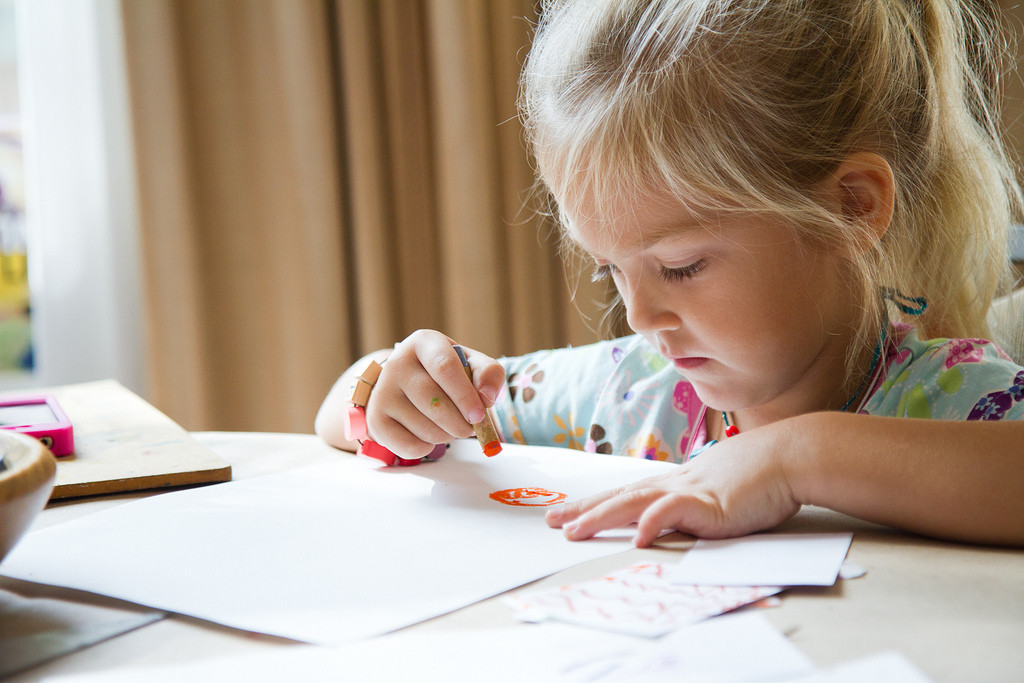In this blog today, I want to share quick pointers on how to talk to your child about their artworks in a positively and artful way. With this quick guide, you can support and encourage your child with the right questions and feedback, even if you don’t know much about art or how to draw a stick figure. I’ll touch quickly on a few areas, and if you want to dive deeper, you can check out my two art teaching books or video training. So here are the topics I’ll introduce to you:
- Understand Art Language (Art Elements)
- Don’t Be An Art Critic
- Listen To Your Child Describe Their Artworks
- The Problem With Praising Artworks
- Art Can Be Completely Imaginative
- Emotional Artworks
- Educate with “I Notice” and “I Wonder” statements

Learn to Speak Art Language (Elements)
First, I want to let you know there is an art language for artists. We call it by this big long word, “The Elements and Principles of Design,” but basically, these words describe general elements you would see in artwork, like a line, a shape, or a color. In short, these are art elements. In my books, I list these out in more detail in understanding art literacy. So that’s the first thing I want you to know. You can learn a general list of art words to use. When your child shows you a drawing, doodle, or painting, you can use some of these artsy words to look for and focus on.
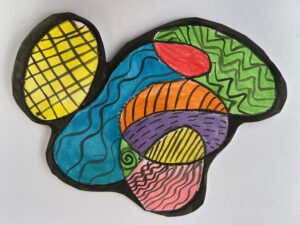
Don’t Be An Art Critic
Second, don’t be an art critic. When kids share their artworks, remember they are in the beginning phases of their lives and are new at painting, drawing, or crafting. It can take many hours of practice to create pictures that are recognizable to adults.
One of the most common mistakes teachers and parents make is asking children too many questions about what they created or trying to analyze it like an art critic. Most artworks made by young kids are experimental, led by curious new ideas or simple art play.
You won’t stifle your child’s creativity or artistic skills by NOT asking artful questions. If your child shows interest and wants to discuss their skills, then art language should be introduced slowly. Supportive nurturing talks can sound like this, “Do you want to share with me what you created?”
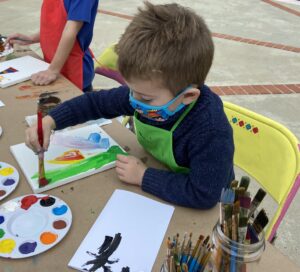
Listen To Them Describe Their Artworks
My third tip is to listen first. My advice is to listen first and try not to quickly ask questions about what they painted or why. Help children feel confident by listening. Listening can help them talk about what’s on their mind or describe their paintings. Listening is very supportive and won’t make a child feel judged or bring focus to their lack of skills.
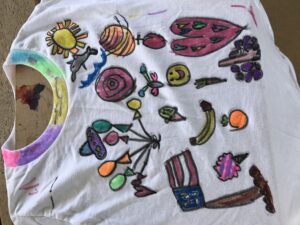
The Problem With Praising Artworks
Refrain from using external compliments like saying “I love it” or “I think it’s so beautiful you’re such a budding artist.” In my training on how to talk to children positively, I explain in detail how this doesn’t educate but only supports external motivation. You want to guide more intrinsic motivation. Learn more about it by checking out my art training, “How to Talk Artful,” here.
But to give you an example, saying “that’s beautiful” is not helpful; instead, focus on elements of the artwork. By learning some basic art elements, you could respond after your child has explained the artwork by pointing out art elements. Like “I like the colors you used here,” “I see the lines and texture you made here,” “I like this space in this area.” These are all general art elements. If you would like a free copy of these general art elements, download my Art Element Vocabulary list here.
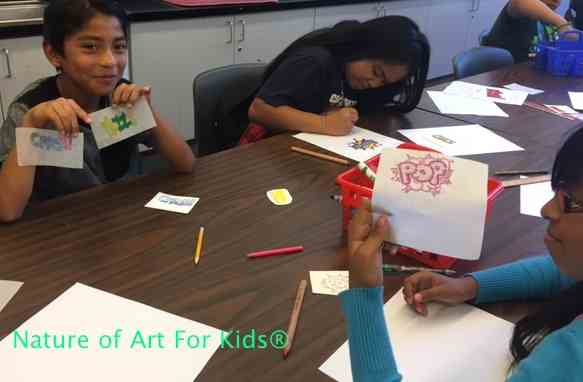
In both my books, I explain how having this vocabulary can help challenge your child to the next learning step or encourage them to grow or advance from their creations by simply saying something like “I wonder” or “I notice” protocols combined with art elements. To learn more about this, I recommend these resources here. But what I want you to remember is to try to be helpful or educational by focusing on art elements or a focal point on their artwork. Replace praising with questions and comments using on the art elements.
Other Common Art Don’ts
Other common things I don’t recommend are asking “What is it?” or making guesses about what something looks like. For instance, don’t assume the big yellow object is a banana; let the child explain that it’s actually a yellow surfboard. These assumptions can lead to children feeling frustrated and embarrassed. Instead, try phrases like, “Can you describe your artwork to me? What is this yellow shape here? Is it complete, or are you still working on it?”
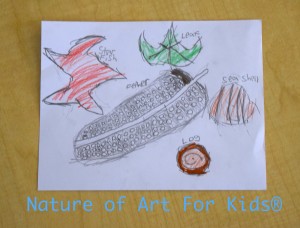
Art Can Be Completely Imaginative
Art can be either imaginative or a replication. Many times, children work from their pure imagination, conjuring up ideas straight from their heads. Sometimes adults expect to see something recognizable and commonplace. Be open to art that may carry deeper meanings beyond what meets the eye with just art elements. Additionally, their artwork can be fueled by emotions and may be somewhat abstract.
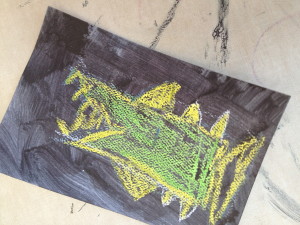
Emotional Artworks
I share many stories in my first book (Nurturing Children In The Visual Arts Naturally) about my own son’s artwork depicting our cat that passed away. Without my knowledge, my son drew a picture of our cat. While I thought he simply wanted a memento of our cat, in reality, he had no words to express the pain he felt for the loss and was hesitant to share it with me. So, try not to overlook the fact that sometimes artworks maybe internal expression of emotions that need an outlet. This is crucial to remember when children share their artworks.
Lastly, avoid assuming the role of a psychologist when interpreting what children draw. Sometimes there is meaning behind their creations, and sometimes it’s just fleeting ideas. If you have concerns, it’s best to consult an actual therapist or psychologist. I once worried because my son kept drawing knives, but it turned out to reflect a lifelong passion for mechanics rather than any intent to harm. Remember to help children express feelings that are difficult to articulate.
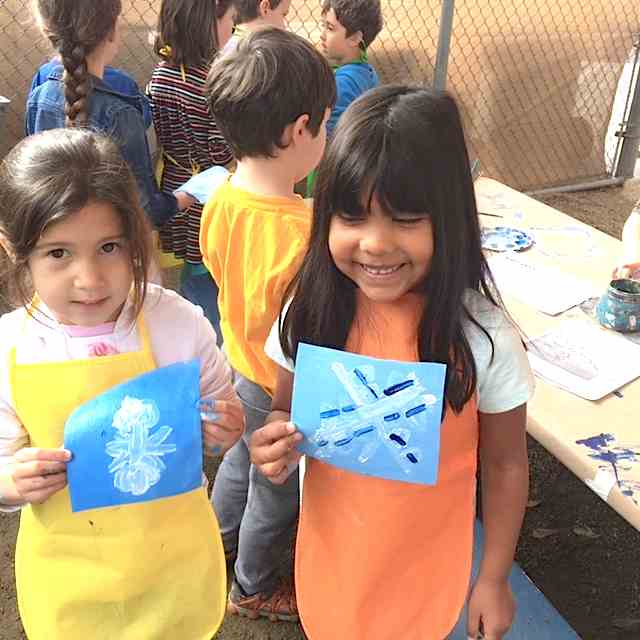
Allow your children to choose whether they want to share their work with others. Sometimes art should remain in their private journals, while other times they may wish to showcase it at home or school. Give children the freedom to decide. I delve into this topic extensively in my Art Guide – Elementary.
Displaying artworks can aid students in developing their skill sets. It’s beneficial to keep looking at art to draw connections to art elements or techniques used by artists. Personally, I often get inspired to create new artwork by observing pieces hanging around my house.
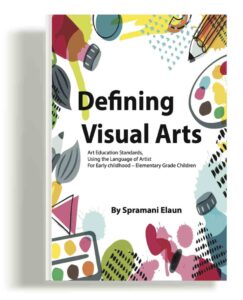
Teaching Visual Arts At Home
If you are homeschooling or aiming to support your child in learning more about visual arts, I recommend providing prompts and techniques using art elements to educate and foster their skills further. By educating yourself and guiding your child to explore the art elements, you can enhance their artistic learning and introduce them to a world of imaginative and creative inventing.
You can learn basic strategies for discussing art to support your child’s artistic development and even how to guide your children on viewing artworks at a museum, regardless of your art background. Here are some recommended art resources if you wish to explore further in teaching visual arts to your child.
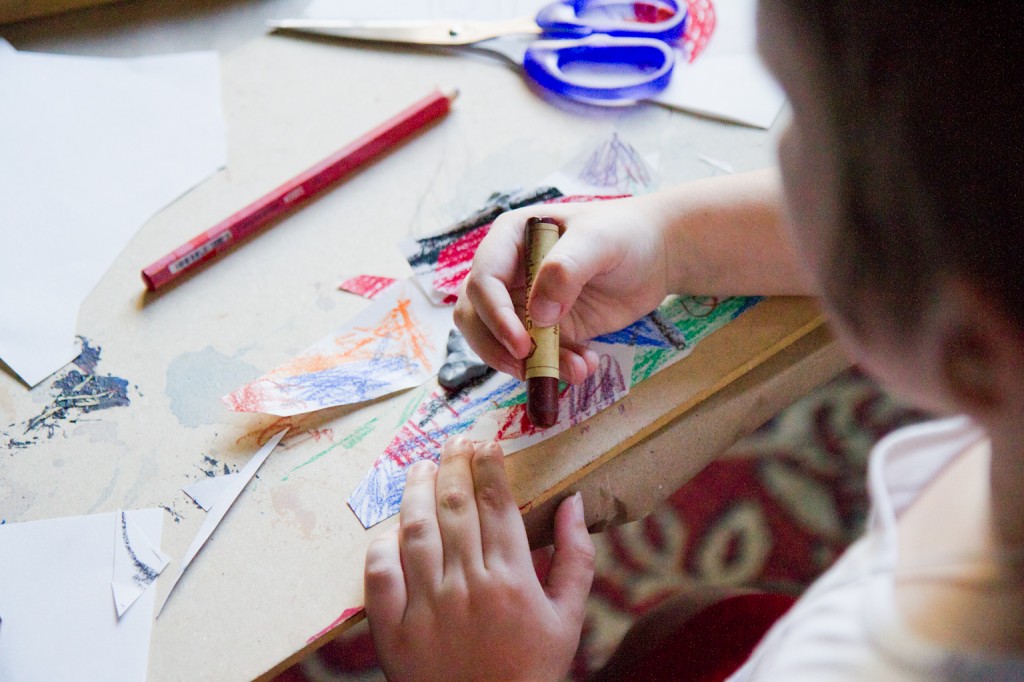
The Importance of Talking to Children About Their Artworks
Understanding the importance of adopting artful approaches to support your child when they share their drawings and doodles is crucial. Drawing from over thirty years of experience as an art teacher, I have witnessed numerous instances where misguided questions or comments have stifled creativity, even leading a child to abandon drawing altogether. Countless adults have confided in me, expressing how they feel uncreative due to unnecessary remarks from parents or teachers about their artworks. Therefore, it is genuinely essential to learn these techniques. By familiarizing yourself with art elements and terms, you can nurture creativity throughout childhood, whether for your own child or in a classroom setting. It’s crucial not to say the wrong things to a child who is learning to draw, and this can happen unintentionally. With these tips, I am confident you can foster your child’s love for art!
My final recommendations are:
- Learn basic art elements (Free Download)
- I recommend distinguishing between external and intrinsic art motivation.
- Avoid praise-type statements. (Buy Video Training, Positive Art Talk)
- Utilize “Notice and Wonder” protocols—the scientific approach.
- Incorporate art language.
All these topics are extensively covered in my art teaching books!
Resources:
Spramani’s Books
Teach children visual arts
Curriculum For Children
Get step-by-step art curriculum to teach visual arts. Check out our 4 art curriculums:
Painting
Drawing
Color Theory
Clay Modeling
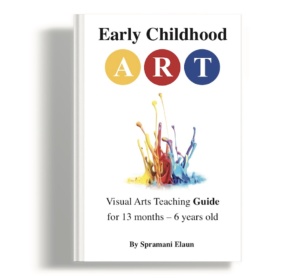
All rights reserved © 2025, Nature of Art®

No part of this blog may be used or be reproduced in any manner whatsoever including reproducing, publishing, performing, and making any adaptions of the work – including translation into another foreign language without written permission except in the case of brief quotations embodied in critical articles and reviews. Nature of Art® Publishing P.O. Box 443 Solana Beach, California 92075.
